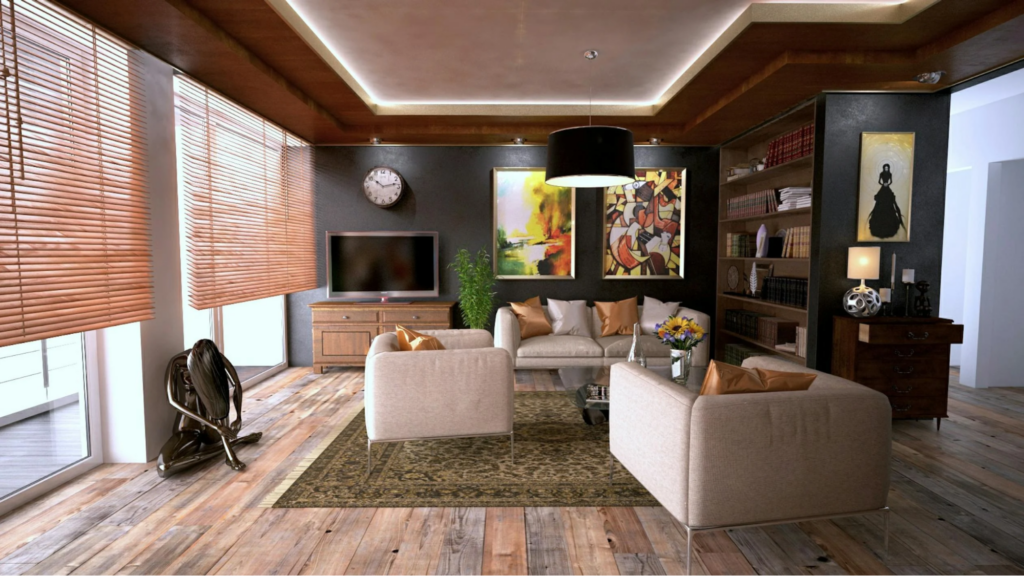Choosing the right paint color can transform a room, set the mood, and showcase your personal style. However, with so many options available, picking the perfect shade can feel overwhelming. From understanding color psychology to considering lighting and room function, a few thoughtful steps can simplify the process and ensure a beautiful, cohesive result. Here’s a guide to help you select the ideal paint color for every room in your home.
Understand the Impact of Color Psychology
Different colors evoke different feelings, which can influence the atmosphere of a room. For instance, cool colors like blue and green are calming and work well in spaces meant for relaxation, such as bedrooms and bathrooms. Warm colors like red, orange, and yellow, on the other hand, bring energy and can be perfect for social areas like the kitchen or living room. Neutral shades provide a versatile backdrop and can create a serene, balanced environment. When considering a high-quality paint, fine paints of Europe offer an array of rich colors and premium finishes that allow you to bring a sophisticated touch to your chosen palette. Selecting a color with purpose, based on the room’s function and desired vibe, will make your home feel inviting and well thought out.
Test Paint Samples in Your Space
Colors can look drastically different under various lighting conditions, so it’s crucial to test paint samples in your home before making a decision. Purchase small sample pots of your top color choices and paint swatches on different walls in the room. Observe these patches at different times of day to see how natural and artificial light affect the color. If you’re considering multiple colors, test them side by side to see how they complement or contrast with each other. Testing colors in your own space helps ensure you’ll be happy with the final result, preventing any surprises once the paint is applied to the entire room.
Consider Your Home’s Style and Existing Decor
The architectural style of your home and your existing decor play a large role in the paint color selection.
Traditional homes may look stunning with classic shades like deep blues, greens, or neutrals, while modern spaces can embrace bold, vibrant colors or sleek, minimalist tones. Take cues from your furniture, artwork, and flooring to find a color that complements the overall aesthetic. If your decor is dynamic and features many colors or patterns, a neutral wall color can provide balance without competing for attention. On the other hand, if your furniture is more understated, a pop of color on the walls can bring interest and energy to the room.
Decide on the Finish for Function and Style
The finish of your paint is just as important as the color itself, as it can affect the durability and appearance of the walls. Flat or matte finishes work well in low-traffic areas, like bedrooms and dining rooms, because they offer a smooth, non-reflective surface that hides imperfections. Satin and eggshell finishes provide a slight sheen and are more durable, making them suitable for living rooms, kitchens, and hallways. Semi-gloss and gloss finishes are highly durable and moisture-resistant, ideal for bathrooms, kitchens, and trim. Keep in mind that glossier finishes are more reflective, so they can make colors appear brighter. Choosing the right finish based on the room’s function will help your paint job look its best over time.
Coordinate With Adjacent Rooms
To create a cohesive flow throughout your home, consider how the colors in each room interact with one another. For example, if your living room flows into your dining room, you may want to choose complementary colors that harmonize rather than contrast. Using variations of a single color palette, such as different shades of blue or gray, can add depth and continuity across your spaces.
Alternatively, you can use a neutral shade as a base throughout the home and incorporate accent colors in individual rooms to create a distinction without disrupting the visual flow. Coordinating adjacent rooms helps establish a unified design, making your home feel thoughtfully connected and balanced.
Take Inspiration From Nature and Personal Favorites
Nature offers a timeless palette that can work beautifully in home interiors. Earthy tones like greens, browns, and blues bring a sense of calm and connection to the outdoors. Sunsets, oceans, forests, and flowers all offer a range of colors that can serve as inspiration for various spaces in your home. Don’t be afraid to draw from personal favorites as well. If you have a color you love—whether it’s from a favorite painting, fabric, or memory—use it as a foundation for your choices. Integrating these shades can make your space feel uniquely yours, adding personality and warmth.
Selecting the perfect paint color for your home is a rewarding process that goes beyond simple aesthetics. By considering factors like color psychology, lighting, room function, and personal style, you can create a harmonious environment that reflects your taste and enhances your lifestyle. With the right approach and attention to detail, your home’s new colors will elevate each room, making it a space you’ll love to live in.




More Stories
Why Allergy Sufferer Needs an Air Purifier at Home: Improve Your Well-Being
Minimalist Interior Design Ideas for Small Student Apartments
The Permit Advantage: How Residential Building Permits Protect Your Investment